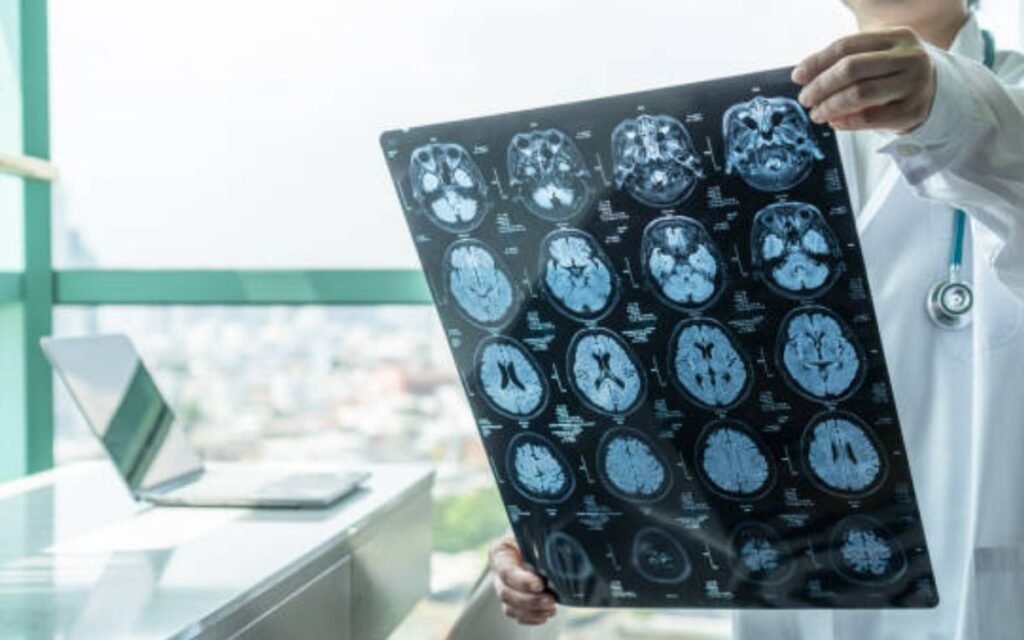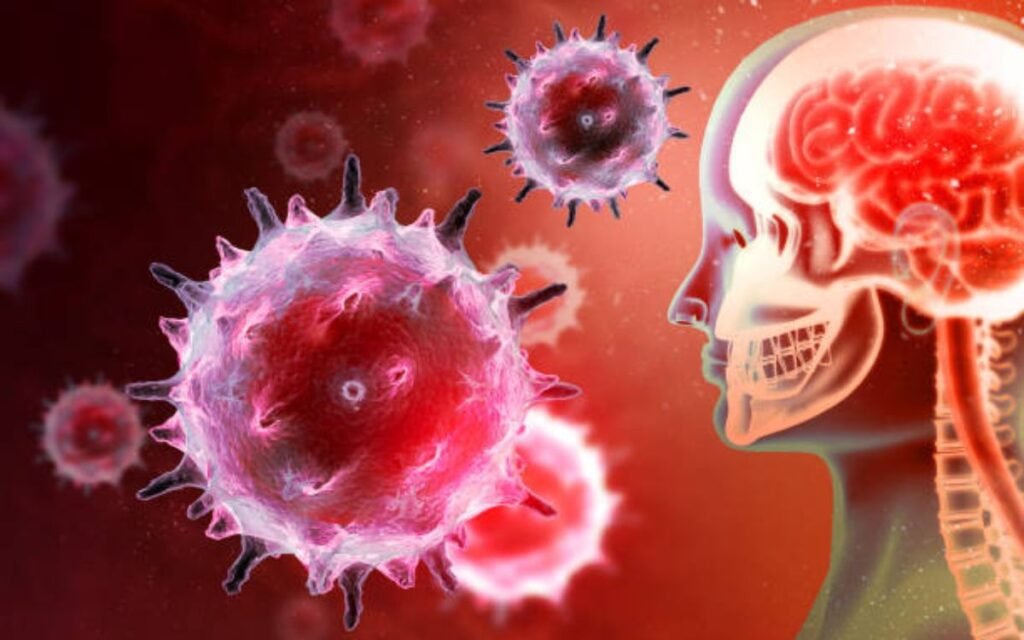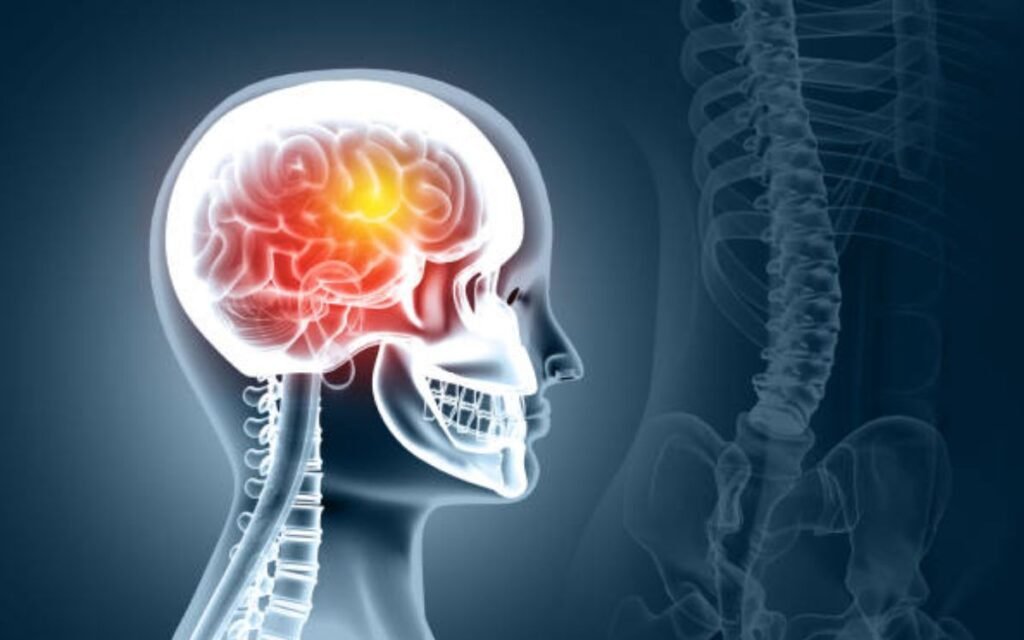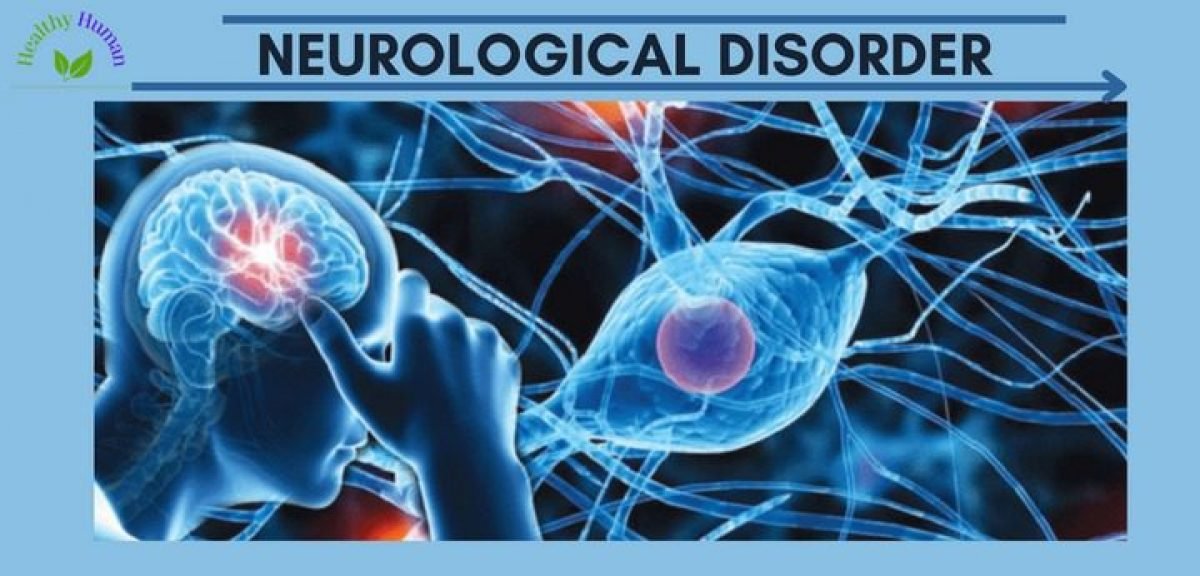In today’s world, rare neurological disorders in humans are conditions that affect the spinal cord, brain, and body’s nerves.
A list of rare neurological disorders

Rare neurological disorder conditions might have an unknown cause, be hereditary, post-infectious, or iatrogenic. However, they may have an impact on peripheral nerves, the spinal cord, or the brain. Although mild tremors and serious motor and cognitive impairment are all possible symptoms. Therefore, therapy frequently offers help.
Adrenoleukodystrophy
A rare X-linked neurological condition known as adrenoleukodystrophy typically affects young men.
However, the X-linked recessive disease is inherited.
Primarily affects young boys (early childhood)
Pathophysiology: A mutation in the ABCD1 gene, which codes for a protein that transports ATP in peroxisomes (located on chromosome X).
Although very-long-chain fatty acid (VLCFA) transport into peroxisomes is impaired.
VLCFA builds up in the testicles, white matter, and adrenal glands as a result of impaired oxidation.
However, the destruction of adrenal and Leydig cells, however, demyelination of neurons
Symptoms
- cognitive dysfunction
- progressive loss of hearing, vision, and motor function
- Dementia
- Lack of the adrenal glands
- Coma
- Death
Diagnostics
- increased plasma VLCFA concentration
- lower levels of cortisol and ACTH in the adrenals
- Occipitoparietal white matter demyelination on brain MRI
- the analysis of mutations
Treatment
VLCFA restriction and Lorenzo’s oil are two dietary therapies;
Moreover, corticosteroid replacement therapy for adrenal insufficiency
However, allogeneic hematopoietic stem cell transplantation for early cerebral adrenoleukodystrophy
Adrenoleukodystrophy (literally, “tissue wasting of the adrenals and the white matter of the nervous system”) is the medical term for this condition.
Vertical gaze palsy
a conjugate, bilateral restriction of eye movements in the upward- and downward-gazing directions. These Rare Neurological Disorders have multiple symptoms also.
Damage to cranial nerves or the superior colliculi in the midbrain is caused by malignancies (such as pinealoma), multiple sclerosis, encephalitis, and cerebral infarction.
A germinoma, which frequently secretes -hCG, is the most typical pinealoma in infants.
Symptoms
Symptoms of vertical gaze palsy in conjugation
Mydriasis
inadequate pupillary response to light, but adequate pupillary response with accommodation
Ataxia (due to cerebellar involvement)
Boys who have germinoma may have early puberty.
Treatment entails addressing the underlying issue.
chemotherapy or focused radiation if there are pinealomas.
Pinocular germinoma
Kluver Bucy syndrome

However, bilateral injury to the medial portions of the anterior temporal lobes causes the unusual behavioral disease known as Kluver Bucy syndrome (amygdala, hippocampus).
Etiology
Infection (e.g., HSV-1 encephalitis)
head injury
Stroke
Malignancy (e.g., brain metastases)
illness that affects the brain (e.g., Alzheimer’s disease)
Damage to the medial portions of the anterior temporal lobes on both sides is the pathophysiology (amygdala, hippocampus)
Symptoms
- Hyperorality is the term for excessive mouth-to-mouth behavior, although this includes excessive chewing, sucking, and lip-smacking.
- Hyperphagia
- Placidity
- dysfunctional thinking (e.g., memory loss, distractibility, amnesia, aphasia)
- Visual ignorance
- Seizures
Treatment
- Symptomatic and psychotropic medications
- If an active HSV infection is suspected, take acyclovir.
Also Read:- Foods to Avoid In Multiple Sclerosis
Empty Sella syndrome
Rather than being a clinical ailment, this is thought to be a radiologic discovery.
On MRI, a tiny, flat pituitary gland can be seen inside the sella turcica (empty sella)
Epidemiology: Obese women with hypertension are more frequently affected
Etiology
Idiopathic primary form
Secondary form: linked to trauma, infarction, radiation therapy, surgery on the pituitary gland, and idiopathic intracranial hypertension (e.g., Sheehan syndrome)
Pathophysiology
Primary forms: compression and/or atrophy of the pituitary gland; enlargement or deformity of the sella turcica, however, which surrounds the pituitary gland; However, leakage of CSF into and partial or total filling of the sella turcica.
Moreover, the small pituitary gland as a result of, for instance, the surgical removal of a pituitary tumor or elevated intracranial pressure is the secondary form.
Symptoms
typically asymptomatic
In severe situations, hypopituitarism symptoms
Treatment
Although, hormone replacement therapy for hypopituitarism
Lance-Adams syndrome
A rare side effect of adequate cardiac resuscitation that frequently includes action myoclonus also a Rare Neurological Disorder.
Hypoxic brain injury is the cause.
Symptoms
various kinds of myoclonus (possibly in combination with asterixis and cerebellar ataxia)
Treatment
antimyoclonic medications
Syndrome Tolosa-Hunt
However, this is an unidentified syndrome with a unilateral periorbital headache and one or more oculomotor nerve palsies.
Etiology: unknown
Pathophysiology: Cavernous sinus or superior orbital fissure-related granulomatous inflammation
Symptoms
severe discomfort behind the eyes
eye paralysis (paresis) (ophthalmoplegia)
Treatment
prescription of prednisone
Myelopathy caused by HTLV-1
An uncommon, persistent neurologic condition with a sluggish progression that is linked to HTLV-1
Tropical regions are affected by epidemiology.
However, human T-cell lymphotropic virus type I (HTLV-1) infection, immune system response in the central nervous system, chronic CNS inflammation, and neurodegeneration are the etiologies.
Symptoms
In a manner similar to multiple sclerosis or amyotrophic lateral sclerosis, with the inclusion of Polymyositis.
Treatment
Supportive
Prion diseases
Diseases brought on by prion contamination Although animals and humans are both affected by prion diseases. However, a different card discusses Creutzfeldt-Jakob disease (CJD) and variant CJD.
Kuru
prion infection that is quickly fatal.
Moreover, cannibalism rituals served as the etiology of acquisition.
Pathophysiology of gray matter, however, spongiform degeneration, gliosis, and neuronal loss in the brain
Also Read:- Effective Lifestyle Habits which can Reduce the Risk of Dementia
Symptoms
- Ataxia of the brain
- trembled muscles
- irrational chuckling
- Supportive treatment
- Syndrome Sträussler-Scheinker-Gertmann
- a prion infection that is quickly fatal
- Amyloid plaques are deposited in the pathophysiology, primarily in the cerebellum.
Symptoms
Ataxia of the brain
Dysarthria
Nystagmus
dementia of late-onset
Supportive treatment
Neurodegeneration with brain iron accumulation 1

However, a neurological condition that runs in families and is characterized by brain iron accumulation
Children are typically affected by epidemiology.
Etiology: PANK2 gene mutation (encodes the enzyme pantothenate kinase 2)
However, iron buildup in the brain due to pantothenate kinase 2 deficiency is the pathophysiology (mainly the basal ganglia).
Symptoms
Rigor \sTremor
Choreoathetosis
Dystonia
Dementia
Signs of a pyramidal tract (e.g., Babinski sign)
Moreover, symptomatic treatment (i.e., anticholinergics, benzodiazepines, and anti-spasmodic drugs)
Optical crisis
a prolonged period of spasmodic upward eye movement that usually lasts several minutes
Etiology
Drug-induced (i.e., neuroleptics, amantadine, benzodiazepines)
alcohol consumption, emotional tension, and exhaustion
Basal ganglia abnormalities are additionally seen in individuals (e.g., postencephalitic Parkinsonism, Parkinson’s disease)
Symptoms
followed by an upward eye deviation and a fixed stare
Restlessness
Eye discomfort
Treatment Includes diphenhydramine and/or benztropine.
Cramp fasciculation syndrome
A general hyperexcitability condition of the peripheral nerve with an unknown cause.
Symptoms
Fasciculations
Myoclonus
several diagnoses
A persistent condition known as benign fasciculation syndrome causes numerous fasciculations but no muscular atrophy, weakness, or other neurological issues.
A rare disease called neuromyotonia is characterized by persistent fasciculations, muscle stiffness, myokymias, and the emergence of myotonic movements following muscle contraction. Moreover, it is linked to VGKC-antibody complexes.
Supportive treatment
Periodic limb movement disorder
a syndrome that causes frequent, unconscious toe and ankle flexion and extension (and occasionally knee and hip motion) while you’re sleeping
Etiology: unknown
Pathophysiology: idiopathic dopaminergic system dysfunction
Symptoms
recurring arm and leg motions
However, benzodiazepines, dopaminergic substances, or antiepileptic medicines are used as treatments (e.g., gabapentin).
Denny-Brown syndrome
Moreover, a polyneuropathy paraneoplastic, typically linked to small cell lung cancer,
Symptoms
symmetrical distal paresthesia
Proprioception and autonomous control dysfunction
Treat the underlying condition (SCLC)
Epilepsia partialis continua
a rare kind of epilepsy that resembles status epilepticus but exclusively impacts specific body regions
Etiology
brain cancer
Traumatic brain injury Encephalitis
The Clinic attributes: seizures with focused motor clonus that may last for days, weeks, or even longer.
However, treatment entails addressing the underlying issue.
Giant axonal neuropathy
a chronic degenerative neurological illness that is autosomal recessive
Symptoms
polyneuropathy with early-onset
issues with the bladder
Constipation
lack of sweating ability or heat intolerance
Supportive treatment
fatal before the third decade of life is the prognosis
a central core condition
switch arrow icon
However, an uncommon congenital myopathy is described.
Pediatric onset according to epidemiology Clinical characteristics
weak proximal muscles
Kyphoscoliosis
dysplastic hips
delay in development
Symptomatic and supportive therapy
Syndrome Kleine-Levin
a rare neurological condition marked by hypersexuality, hypersomnia, and binge eating
Epidemiology: Predominantly affects male adolescents.
Unknown Etiology (although viral infections have been implicated)
Symptoms
Hypersomnia that occurs frequently (however, patients are only awake for 1-2 hours each day)
When awake, hypersexuality
Food bingeing
Recurrent menstrual hypersomnia as a subtype
However, this is a very uncommon variation.
marked by frequent episodes of extreme drowsiness either before or during menstruation
Moreover, compulsive eating (65% of cases) (29 percent of cases)
Sometimes symptoms improve after using estrogen-containing birth control.
Supportive treatment
Elsberg disorder
an infectious condition characterized by bilateral lumbosacral radiculitis and lower spinal cord myelitis
Sacral myeloradiculitis has a variety of viral etiologies, with HSV-2 infection being the most prevalent.
Although, Clinical indicators of lumbosacral radiculitis include temporary urine retention.
Supportive treatment (i.e., urethral catheterization)
Myelo-optic neuropathy that is acute (SMON)
A severe neurodegenerative condition brought on by clioquinol treatment is defined as
Epidemiology: In the 1960s, however, Japan saw the majority of cases.
Iatrogenic in origin (induced by the drug clioquinol)
Symptoms
gradual paralysis
Blindness
Reversible treatment (withdraw clioquinol)
Canavan disease
White matter loss progresses over time in Canavan illness, However, a rare genetic neurological condition. It is also considered one of the known Rare Neurological Disorders.
The aspartoacylase (ASPA) gene, produces the enzyme aspartoacylase, which converts N-Acetylaspartic acid (NAA) into aspartate and acetate, However, the cause of the condition is unclear.
ASPA gene mutation causes neuronal pathophysiological dysfunction and a lack of myelin is caused by high NAA levels in neurons however, oligodendrocytes also.
Symptoms
- The two primary illness types are mild/juvenile and neonatal/infantile.
- Neonatal/infantile form: normal at birth; Moreover, first signs appear between 3 and 6 months of age.
- Macrocephaly
- lack of mental discipline
- Hypotonia
- Seizures
- progressive loss of vision
- Early-onset in mild/young forms:
- Based on clinical and neuroimaging results, the diagnosis
- increased NAA concentrations in urine samples
- Neuroimaging
- However, White matter degeneration in the subcortical regions of the brain is diffuse and symmetrical.
- Elevated NAA and NAA: creatine ratios in MR spectroscopy (pathognomonic finding)
- Testing for molecular genetics
Supportive treatment (e.g., feeding gastrostomy tube in case of dysphagia, AED to manage seizures, botulinum toxin injections for spasticity)
However, death in the first ten years of life in the neonatal or infantile form
Mild/young form: lifetime comparable to that of the general population
However, The buildup of NAA is what causes CaNAAvan illness.
Also, Read Allergies’ Impact on Mental Health.
Conclusion
So this is about Rare Neurological Disorders with symptoms. With increasing age, degenerative neurological conditions that impact cognition, sensory function, and although, motor abilities are more prevalent. Moreover, as a result of the functional impairment, older adults have a worse quality of life and become dependent, necessitating assistance with basic personal care. The requirement for expert long-term care services, whether provided at home or in a facility, is strongly correlated with these illnesses. However, research into the causes and treatments of age-related neurological illnesses is of utmost relevance if we are to achieve the objective of making increasing life expectancy a story of effective aging rather than increasing impairment.




